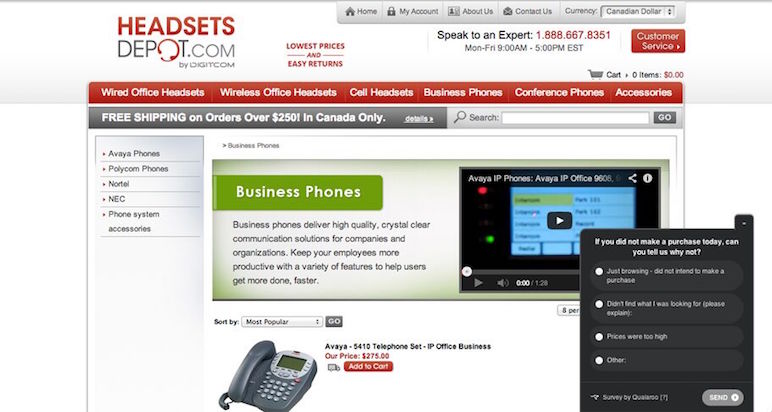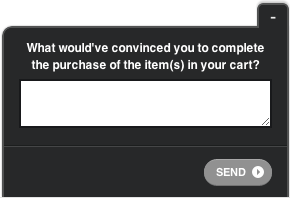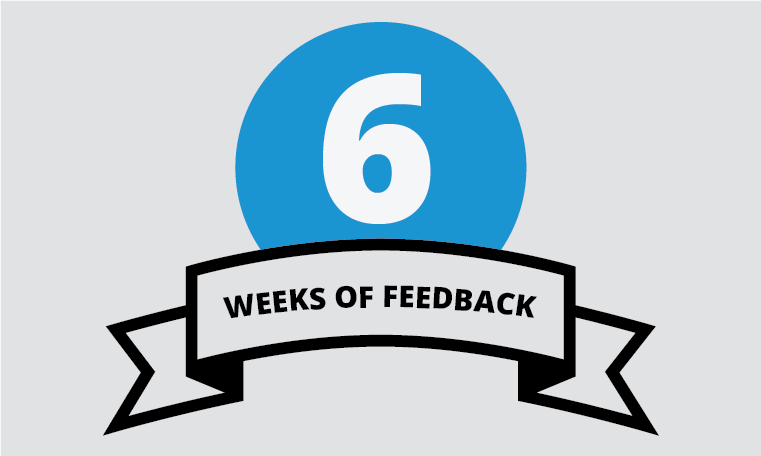It’s business best practice to survey your loyal and returning customers about everything from their experience to product quality to their personal wants, needs, and demographics. In fact, you’ve probably run into one of these surveys yourself—buy a pair of shoes online, receive a survey about your experience via email.
In fact, if you’re reading this, there’s a decent chance you’re responsible for surveying your company’s customers and users. Surveying users makes perfect sense—these established customers “get” your product, and you want to ensure that your customers are satisfied while identifying new opportunities for growth, retention, and product enhancements. In other words, they help you build upon your strengths and keep your paying customers happy.
But they’re not the only ones who can help you grow your business and improve your product.
Don’t Ignore Non-Buyers
Another group worth surveying is window shoppers—those almost-customers who clicked around on product pages for a while, added a few items to their shopping cart, maybe even initiated the checkout process, but for some reason did not go all the way.

Just as it’s beneficial to learn what makes your product “must-have” for your most loyal users, it’s critical you learn what objections and barriers are stopping these lookers from becoming buyers. But how do you even begin to go about getting answers from visitors who didn’t complete the checkout process and thus didn’t provide any contact information?
Once they exit, these visitors—both their insight and their potential purchases—might as well have never existed. Though you can always run retargeting ads, even the best campaigns will return a fraction of these visitors. You need another tool in your arsenal, one that allows you to catch them in the moment—while they’re still on your site, dealing with whatever objections are keeping them from taking that ultimate step from visitor to customer.
Uncover Hidden Issues with Onpage Surveys
Known as page-based, on-site, or in-line surveying, this type of survey is implemented directly on key pages of your website, when and where you need it most. If, for example, you manage an ecommerce site that struggles with cart abandonment, you can present visitors with an on-site survey during the checkout process and find out what exactly is preventing visitors from completing their orders.

HeadsetsDepot.com uses a Qualaroo onpage survey to determine why shoppers abandon their carts.
You can use that feedback to inform your testing and optimization program, improving conversion rates and profitability of your ecommerce store. The feedback may surprise you. While you may get a slew of price objections, you may also learn that your site didn’t feel trustworthy enough, or that they were unsure of your return policy. These are all easy fixes with messaging and creative tweaks that can be tested.
More serious issues can be uncovered as well, like one Qualaroo customer who found a potential $60,000 issue with javascript validation for certain shoppers using Safari web browsers. Needless to say, your successful customers could never tell you about this critical error.
Reducing Bounce Rates to Improve Conversions
Let’s look at another example. Say you have a page with an exceptionally high bounce rate. You’ve poured over your analytics reports and heatmaps, but you still can’t find an explanation. To get to the bottom of what’s going on, try implementing an exit survey asking visitors exactly what they’re were looking for and why they felt they weren’t able to find it on you site.
By using an exit survey you keep the friction low for converting visitors, but get one last chance to ask an exiting visitor what went wrong—before they’re gone forever. Many of them won’t bother with the survey, but you’ll get enough responses to formulate your next series of conversion rate optimization hypotheses. From discovering that your messaging misses the mark, to identifying traffic channels that aren’t effective, your exit survey can give you the context you need to make the optimizations that will really improve performance. You’ll no longer have to guess at what to test next.
Best of all, if you use a Qualaroo Convert exit survey, you can reroute respondents to additional conversion opportunities based on their responses. Let’s say that a visitor is leaving because they don’t know if you provide shipping to international addresses. If you uncover that objection to converting in your survey you can route that person to a live chat with customer service to discuss shipping options.
Not only did you get valuable feedback to improve the messaging on your website, but you saved a potential customer in real time.
Learn from Those That Don’t Convert
If you’re focusing your surveying on only the people that convert, you’re missing out on real opportunities to improve the performance of your website and the success of your business. With on-site surveys, you can unlock a whole new source of insights that lead to new opportunities.
A single question at the right point in the conversion process can save you weeks or months of guessing about what to test next. Often, the answer you’re looking for is not one you or anyone on your team would’ve considered. And that’s okay—as long as you’re asking those who do have the answers.
Find out what’s keeping your window shoppers from buying within minutes with a free 14 day trial of Qualaroo on-site surveys. It’s risk and obligation free, plus there’s no downloading or coding required.
 Tips
Tips
We’d love to hear your tips & suggestions on this article!
FREE. All Features. FOREVER!
Try our Forever FREE account with all premium features!

 We'd love your feedback!
We'd love your feedback! Thanks for your feedback!
Thanks for your feedback!






